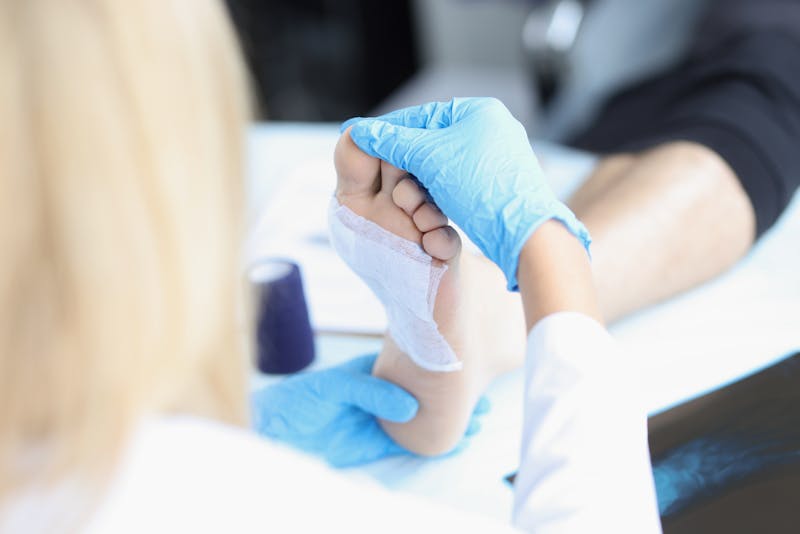
Whether they result from trauma or an injury, wounds are painful and cause distress. Moreover, they trigger a complex and dynamic healing process.
The wound healing process can be divided into four separate stages: hemostasis, inflammation, proliferation, and maturation. Each of these phases is defined by its vital chemical processes, which work to maintain the individual's well-being by regenerating their damaged cells. In cases where a wound is serious, blood clotting and tissue regeneration occur, leading to a scar. Every scar serves as a reminder of the various biochemical processes that go into wound healing and tissue repair.
Continue reading to learn more about the four stages of wound healing and to discover a clinically-proven method for reducing the appearance of scars.
The Four Phases
Historically, scientists only recognized three phases of wound healing: inflammation, proliferation, and maturation. It should be noted that these phases have been referred to by different names, depending on the writer. For example, the proliferation stage has been referred to as fibroblastic or granulation, while the maturation stage is sometimes called remodeling.
Later on, this number was changed to four as authors and doctors added the hemostasis phase occurring before inflammation. There has been some debate about this classification, as some consider hemostasis to be the preliminary part of the inflammation stage. Overall, biochemical processes that are present in one stage can overlap with others. Therefore, it is difficult to clearly define where one phase ends and the next one begins.
Hemostasis
The first phase of wound healing, hemostasis is a first response mechanism for injuries. Immediately after a person is wounded, the blood vessels in the damaged area constrict and tighten in order to inhibit blood flow and prevent blood loss. This process is called vasoconstriction.
Next, platelets are released, coagulating with fibrin (fibrous protein) at the wound site. The accumulation of platelets and fibrin forms a blood clot that keeps the broken blood vessels sealed and prevents further blood loss. The hemostasis process can last for two days or longer. Keeping the wound covered with a bandage or gauze will facilitate hemostasis and blood clotting.
Inflammation
Inflammation is a biological process that is defined by blood vessel dilation, also known as vasodilation, soon after the hemostasis phase has ended. The primary objective of vasodilation is to prevent infections throughout the healing process.
During vasodilation, various enzymes and leukocytes (white blood cells) that are beneficial to the body enter the wound site to induce inflammation. The inflammatory stage is characterized by redness around the wounded area, swelling, pain, and heat. This phase of the healing process can last for six days or longer. As mentioned before, the biochemical processes that take place in the inflammation stage overlap and interact with the processes of hemostasis.
Proliferation
The third phase of wound healing, proliferation, is defined by a process called angiogenesis, the genesis of granulation tissues. Granulation tissue is most easily defined as an extracellular matrix that consists of newly-generated connective tissues and blood vessels that are designed to replace tissues that have been damaged. This replicative tissue is usually pink or red in color due to its inflammatory agents—which indicates that a wound is healing properly.
This stage of tissue regeneration depends on fibroblast synthesis and collagen production. The entire proliferation stage can last for more than two weeks following a trauma. It is vital that high levels of moisture and oxygen are maintained throughout this stage to ensure proper proliferation in wound healing.
Maturation
The fourth and final stage of the wound healing process is maturation, otherwise known as remodeling. This phase can last as long as two years after the wound has fully sealed off. Collagen production continues throughout the maturation phase, working toward reinstilling durability and elasticity in the skin.
A buildup of collagen in the granulation tissue ultimately results in new scar tissue. The maturation phase also features a stabilization of vascularity from the previous stages. Cells and other molecules that are found in these stages engage in apoptosis, or programmed cell annihilation. Generally speaking, the scar tissue that forms in the maturation process is about 20 percent weaker than pre-injured skin.
Problematic Scarring
Excessive collagen production and buildup of cells result in keloid and hypertrophic scarring. This is usually a result of fibroblasts and keratinocytes in the skin working harder than they need to at restructuring and rebuilding the damaged tissues. Abnormal scars tend to look more raised and discolored, and as there are no hair follicles or sweat glands in scar tissue, they can feel itchy and painful.
The Wound Evolution Perspective
At Wound Evolution, we are dedicated to helping patients get through the four stages of wound healing in the smoothest way possible. Our approach is predicated on three simple principles: people, processes, and patient experience.
Our staff has been carefully selected to ensure that our patients receive only the best care. From the start of the process, we listen to our patients' concerns and work with them to curate a plan that will achieve results that meet their expectations.

